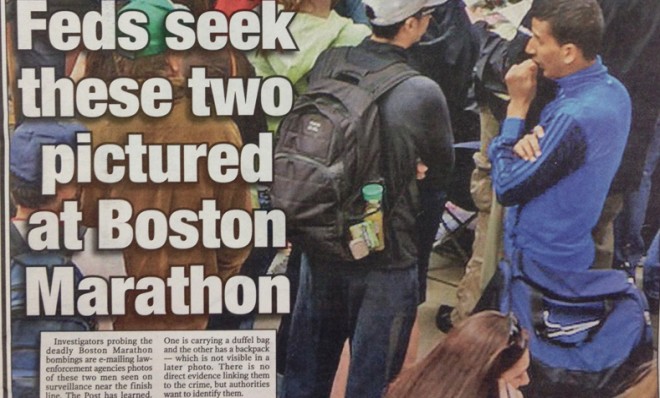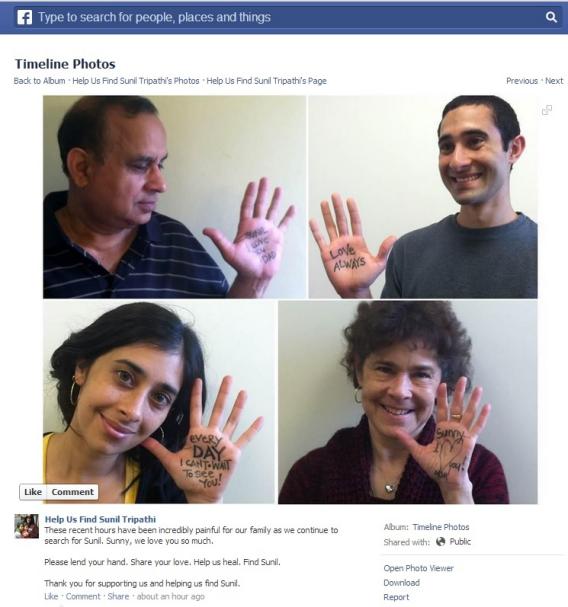As expected, social media became the hub for information during last week’s intensive manhunt for the Boston Marathon bombers. At its best, social nets kept people informed with up to the minute information. Yet as the hunt became more frantic and authorities called on the public for help in identifying the suspects, a morass of misinformation began to unfold online. Now people are questioning the role of social media as a viable source of information, especially in an emotionally charged case such as a terrorist attack on U.S. soil.
The most publicized mishandling of information during the manhunt is the case of two innocent high school students misidentified as suspects. Photos of 17-year-old Salah Eddin Barhoum and friend Yassine Zaime made it all the way to the front page of the New York Post with the headline, “Bag men: Feds seek these two pictured at Boston Marathon.” The basis for the connection was an internal Boston law enforcement email which circulated the photo as simply “an attempt to identify the individuals” during the first moments of the manhunt.

The Boston police have since cleared both high school students, but Barhoum has changed his name on Facebook, fearing that some people will still target his account.
In another case, overreaction by a misinformed public turned a missing student into a terrorist on the run, and targeted a family already pained by the mysterious disappearance of their son. The name of missing Brown University graduate student Sunil Tripathi began trending worldwide as he became the focus of speculation after Reddit users claimed to have overheard his name on police scanners. Soon, other social nets jumped on the information and began pegging the 22-year-old as “the man in the white hat” in the photo released by the FBI.
Women’s rights group Binders Full of Women circulated Tripathi’s name as a suspect to hundreds of thousands of its followers on Facebook. News and pop culture site Global Grind decided to play the breaking news game, with news editor Michael Skolnik taking a leap of faith and publishing the missing student’s name as a suspect. Self-styled social media sleuths then took interest in a page that the Tripathi family had set up to find their missing son.

“We started seeing ridiculously speculative traffic,” said Tripathi’s sister, Sangeeta Tripathi. “We froze the page but monitored other social media sites and watched the horrible arc of events unfold.”
Tripathi’s name has since been cleared and many incorrect posts deleted. Unfortunately, Tripathi’s family is still looking for their son.
Journalists have since reflected on the mob mentality that took over the spread of information about the Boston bombers. Numerous news organizations have shamed the NY Post’s rush to judgment, front-page style, in identifying potential suspects.
CNET executive producer Molly Wood has given an exceptionally thoughtful response to what took place. Wood outlined ground rules users can take to avoid spreading misinformation across social channels.
She wrote, “We’re still in the early stages of figuring out how to experience news on social media. I do agree that firsthand reports from witnesses, reporters on Twitter, and those to whom an event is actually happening are invaluable new sources of information. I agree that circulating official “have you seen this person” images on Reddit or anywhere else online is orders of magnitude more effective than the old days of nailing said posters to trees and outhouses. Social media and the Internet have a huge role to play in the future of news — they may very well be the future of news. But right now, they’re making news worse before they make it better.”
Source CNET

